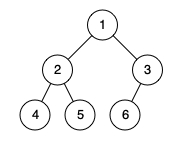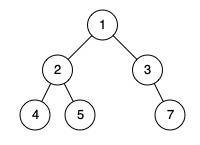958. Check Completeness of a Binary Tree
Given a binary tree, determine if it is a complete binary tree.
Definition of a complete binary tree from Wikipedia: In a complete binary tree every level, except possibly the last, is completely filled, and all nodes in the last level are as far left as possible. It can have between 1 and 2h nodes inclusive at the last level h.
Example 1:

Example 2:

Note:
The tree will have between 1 and 100 nodes.
Last updated
Was this helpful?